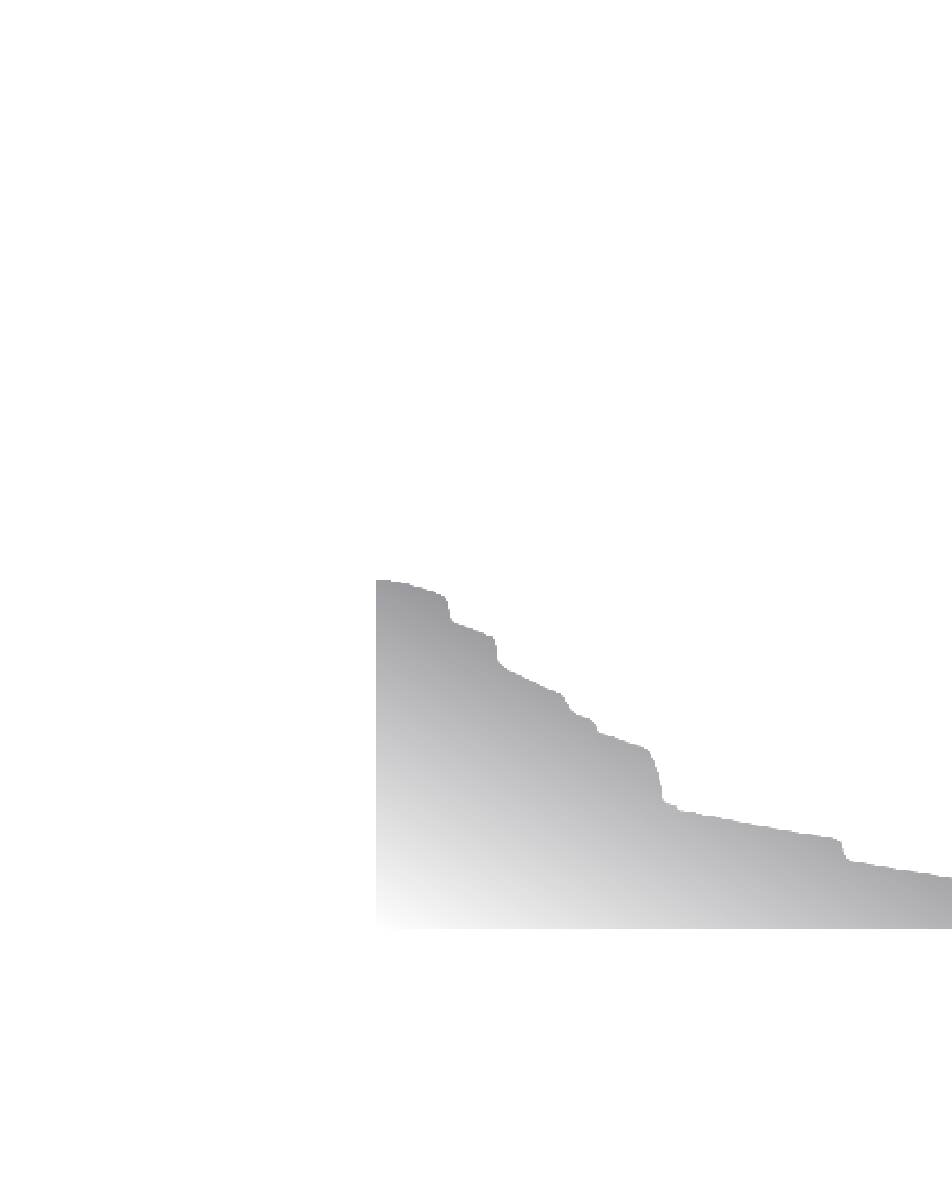Geology Reference
In-Depth Information
A
012345
km
terrace
cover
400
400
Rangitawa Pumice
T1
calibration lignite
(400 ka)
T3
300
300
T2
Rangitawa Pumice
(370 ka: fission track)
T4
T3
T5
220 ka
210 ka
T4
T5
200
200
T6
T7
T6
190 ka 180 ka
90ka
T7
130 ka
80 ka
100
100
90 ka
115 ka
30 ka
T8
Marine Terrace
Chronology
120 ka
90 ka
90 ka
60 ka
T9
T10
0
B
400
New Zealand
Warped & Faulted Terraces
T2
T1
T3
300
T2
T4
T3
T5
T4
T6
T5
200
T7
T6
T7
T8
100
T8
T9
T10
T9
T11
~80 km
0
Fig. 9.5
Dated and deformed marine terrace sequences in New Zealand.
A. Terrace chronology developed using fission-track dating on pumice and amino acid racemization dating on organic
material overlying the terraces. These dates span more than 300 kyr and provide minimum ages for each terrace.
Correlation among sections is based on pumice, soil stratigraphy, and geomorphic position. B. Same terraces warped
and offset across faults along 80 km of coast. Tracing and correct identification of terraces is key to discovering any
offset across faults. The progressively greater offsets of older terraces indicate that the fault has been periodically
active throughout the period of uplift. Note the difference from a faulted trench stratigraphy (Fig. 6.3) in which the
strata at lower elevations record more displacement than those higher in the trench walls. Modified after Pillans (1983).
such a spatial distribution of terraces argues for
an increase in uplift rates. Be aware, however,
that the younger sea-level record is better known
and that its complex and rapid changes have
emerged from recent success with high-preci-
sion dating. Similar sea-level complexity (and
multiple, closely spaced highstands) may also
be documented in the pre-125-ka record when
we develop a similar chronological precision.
If flights of marine terraces can be correlated
with the sea-level curve at numerous sites along
a coastline, or even if they can only be laterally
correlated from one site to the next, these
data can be used to define patterns of differen-
tial vertical uplift. Abrupt offsets in terrace
heights with increasingly larger separations for
successively older terraces on the one side will
indicate the presence of persistently active
faults (Fig. 9.5A and B), whereas steady conver-
gence or divergence between individual terraces
of a given age will exemplify broad warping of
an area.











































































































































